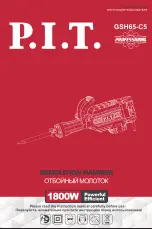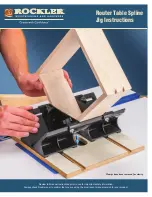
CIRCUIT BREAKER DESCRIPTION
A typical circuit breaker consists of primary disconnects, vacuum interrupters, and operator sections (see
Page
1 8).
The primary d isconnect section contains the main contacts which supply power to the load. The
vacuum interrupters open and close the electrical system during normal and/or fault conditions. The oper
ator section contains the mechanism used to close and open the main contacts. This mechanism consists of
a stored energy operator with its associated control circuitry.
TR IPP ING
The vacuum circuit breaker is tripped due to operation of the manual trip button, (44, F ig. 4b) , the foot
lever (Fig. 4b) or
the
trip solenoid,
(17,
Fig. 8).
INT E R RUPTION
When the c ircuit breaker is tripped while carrying current, the contacts within the vacuum interrupters part,
and an arc is established. Due to the efficiency of the vacuum interrupter, the arc is normally interrupted at
the first
current zero.
CLOSING
The breaker is dosed by the stored energy operator straightening a toggle in the four-bar linkage
(Fig.
7,
Item 12). The operator is powered by precharged springs (stored energy).
STORED ENERGY OPERATOR
The stored energy operator (Figs.
6,
7 &
8) uses charged springs to power the closing operation.
Opening is spring-powered also, but not with the same springs used for closing. A stored energy
operator consists of three systems: spring charging drive, cam and ratchet assembly, and the four
bar toggle linkage (Fig. 5, A - D). These systems are disengaged from each other except while
performing their specific functions. For example -the spring charging drive and cam-ratchet
assembly are disengaged except when the cam-ratchet arrangement is being charged. Similarly,
the cam-ratchet and
four bar linkage are free of each other except during closing.
Stored energy operated breakers normally require a single commercial relay for control. This
relay is furnished to match the control voltage.
AUXILIARY SWITCH
Mounted on the breaker, the auxiliary switch is normally used to open the trip circuit when the
circuit breaker is opened. As this multi-stage switch operates from the breaker disconnect blades,
circuitry dependent on the position of the breaker, such as indicator lights, etc., is wired
through this switch. The individual stages are easily converted to "a" or "b" without disas
sembling the switch (Fig. 1
0).
-4-
www
. ElectricalPartManuals
. com








































